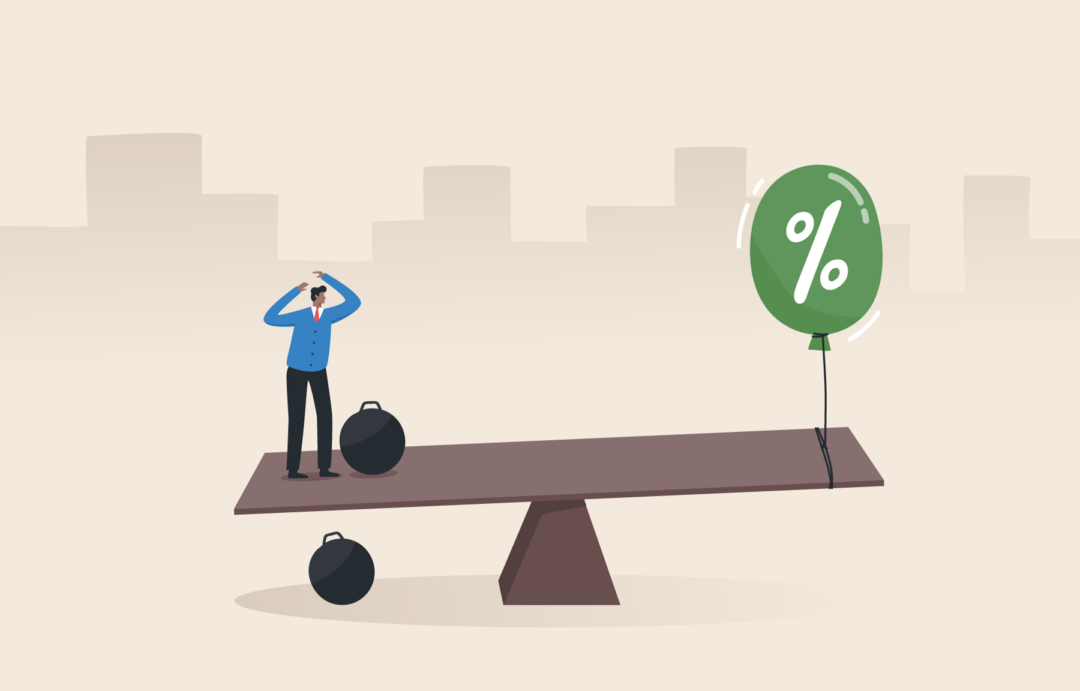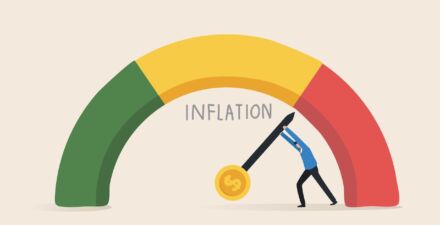Seven ways the inflation debate in the United States has changed since last year and how the Fed can now recalibrate its monetary policy

Inflation in the United States today is considerably cooler than at its peak in the first half of 2022, but it will remain at the center of the economic policy debate as long as readings continue to come in above the Federal Reserve’s 2 percent target. When inflation in 2022 accelerated during the first half of the year, the inflation debate was very different than the one currently facing policymakers, firms, U.S. workers, and their families. If 2022 was about unexpected inflation, 2023 is about how far and how fast inflation decelerates, whether the Fed trusts market data indicating inflationary expectations remain well-anchored, and if the Fed will overreact as inflation and the U.S. economy moderate to more normal levels.
In 2022 both supply and demand factors contributed to swiftly rising inflation, and careful real-time analysis focused on the extent to which each factor was pushing prices higher, as well as on signs of stress in supply chains that led to individual price movements. Much of the more detailed analyses of 2022 involved identifying and attributing specific sources of inflationary pressure to individual supply and demand factors. Other analyses tracked systemically important bottlenecks, including the costs of container shipping and analyzing markets that were under stress, such as job and wage pressures due to the resurgence of the service sector.
To be sure, these concerns are still with us in 2023. Inflation remains above the Fed’s 2 percent target, and systemically important, overstretched sectors of the U.S. economy remain contributors to rising prices. Yet the wave of rising inflation has crested, and the major questions this year are around how far and how fast the tide goes out.
More specifically, a crucial question for 2023 is whether policymakers think inflation’s decline will be driven by expectations, by slackening economy-wide capacity constraints, or simply whether higher consumer prices will continue to slowly abate. In what follows, this column examines seven major inflationary forces and concomitant debates that pivoted significantly between 2022 and 2023.
U.S. fiscal policy
U.S. fiscal policy was very expansionary in 2020 and 2021 and, with a series of lags, was still providing stimulative effects through much of 2022. Many households saved some fraction of the expanded income supports enacted amid the COVID-19 pandemic as part of the stimulus packages in 2020 and 2021, which supported stronger consumption spending in 2022. In contrast, for the balance of 2023, fiscal policy is unambiguously reining in inflation, and presents a nontrivial headwind for economic growth.
Indeed, as the first quarter of 2023 came to a close, the vast majority of those consumer savings are now spent, and the current fiscal impulse for more tax-and-spending policies is strongly negative.
Had the U.S. government not engaged in unprecedented economic support over the previous two years, the current fiscal retrenchment would be a major drag on growth. Thus far a high-pressure economy and strong labor market have sustained economic growth as inflation has fallen, but the U.S. economy will experience slower growth as Fed policy brings inflation further back under control. But after a year of stubborn inflation, the current state of decelerating inflation is less cause for alarm.
This doesn’t mean that consumers won’t continue to power the U.S. economy. Instead, it means a well-functioning U.S. labor market is driving real wages higher and generating incentives for businesses to invest while creating strong, sustainable, and more broadly based economic growth. There will be further fiscal pressure not just in the form of a constrained federal budget, but also from state and local governments as well, particularly those which depend on property tax revenues, which are weakening. If budget deficits and fiscal policy were an inflationary concern in 2022, in 2023 tighter fiscal conditions are reigning in inflation. Counter-cyclical fiscal policy is the correct prescription, but there is some risk that further tightening could undercut a healthy economy with moderating inflation.
The U.S. labor market
The U.S. labor market is much maligned amid the continuing economic recovery—especially as a culprit for inflation. The United States has not experienced an economic recovery paired with a rapid jobs recovery in 40 years, yet real incomes are not rising fast enough to drive inflation. Many of the same commentators who identified hysteresis—long-periods of high-unemployment begetting shrinking labor forces—have feared that this rapid recovery would create unsustainable dynamics in the labor market.
Yet in 2023 these arguments are largely over. Unemployment is low and stable, job growth is strong and moderating, and wage pressures are reducing income inequality, but are not exhibiting the long-term imbalances that can sustain inflation.
There are still pressures in the labor market, of course, but these are much more long term and amenable to good policy. Older workers are less likely to be in the labor market than before the COVID-19 pandemic, for example, but this may represent a return to normal after this demographic drove much of the job growth pre-pandemic. Policy changes that discourage age discrimination can help bring more of these workers back into the labor market if this is a key source of inflation.
U.S. monetary policy
At the beginning of 2022, the only questions facing U.S. monetary policymakers were when to tighten monetary policy, and by how much. With multiple mini-cycles of inflation now easing in the rear view mirror, the Fed’s aggressive—and arguably predictable—catchup strategy of getting behind, and then ahead of, inflation has dramatically changed the forces monetary policies are exerting on inflation. After a decade of undershooting its inflation target, the Fed followed a playbook of waiting for inflationary pressure to emerge beyond expectations in 2022.
In 2023, the Fed is largely past the challenges of fighting inflation out of a liquidity trap, and yet continues to attack inflation from above with traditional monetary policy. There remains some risk since this strategy could call for rate cuts to preserve a stable economy later in 2023, but by waiting to act in early 2022 the Fed has given itself room to make course-correcting rate cuts if needed. While an inverted yield curve is often pointed to as a sign of impending economic weakness, in 2023 it also is a sign of monetary policy returning to a more balanced stance after catchup rate hikes.
Federal Reserve communications
The Fed spent early 2022 being dismissive of inflationary pressures. In 2023, the opposite is the case. Even amid credit tightening after a bout of instability in parts of the banking sector this past February, the Fed remains extremely hawkish in its communications. To some extent this may represent posturing—certainly markets are pricing in that the Fed cannot remain as hawkish as it sounds right now. But to the extent that the 2022 economic narrative was driven by economic commentary opposed to the Fed’s moderate tone on inflation, the 2023 economic narrative is likely to be driven by economic commentary pointing to both the Fed being too soft on inflation on the one hand, and the Fed being too aggressive on inflation on the other.
This is not ideal for the Fed in the short term. Excess inflation will give some commentators claims to credibility, while a growth shortfall will give credibility to others. But in the long term this represents the Fed doing its job on forward guidance. At some point Fed communications will become less hawkish, but part of the Fed’s strategy calling for delayed, aggressive pivots in monetary strategy requires the same pivots in communications. That means Fed guidance is likely to push against inflation in 2023, even beyond the point where it suggests the Fed will create excessive economic headwinds.
Supply-chain bottlenecks
Supply-chain bottlenecks were a clear source of inflationary pressure in 2022, and while they remain an issue in 2023, the bottlenecks the U.S. economy is currently experiencing are less indicative of inflationary pressures than policy opportunities. Take the auto industry. In much of the expansion and recovery from the COVID-19 recession, the auto sector was a major brake on economic growth and a contributor to inflation. While in general consumer spending on cars and trucks is a large source of demand in the U.S. economy, as well as a significant source of tax revenue for local governments, the auto industry amplified economic challenges for most of the expansion due to a series of supply-chain issues.
Most notable in 2022 were supply-chain issues involving chips and ports, but in 2023 and beyond the bottlenecks facing the auto industry involve batteries, lithium and electric charging stations. The pivot recognizes economic success in mitigating temporary supply chain pressures, but there also is a need to address the long-term growth challenges facing automakers over the next decade of energy transition. This is not the end of inflationary pressures, but if lower interest rates were expanding demand last year, then a combination of federal policy and relatively modest interest rates are now expanding supply in 2023 and beyond in the auto sector.
Supply-chain bottlenecks are not over. The uneven and rapid U.S. economic recovery is still creating lots of mismatches in the economy—especially in globalized sectors where the U.S. recovery has outpaced much of the world. Imports are still subject to backlogs, and an aging U.S. population and years of uncompetitive wages have left some service-sector providers flat-footed in the face of healthy demand. But on balance, supply pressures are likely to bring down inflation in 2023—and to the extent they do not, these supply pressures are contributing to investments in various sectors across the economy over the next decade that will help strengthen growth.
Housing market and commercial real estate
While the pressures of remote work on housing and office markets will continue in 2023 and beyond, its inflationary dynamics are not likely to remain the same for the foreseeable future. That is, in the first few years of the pandemic remote work caused considerable pressure on housing markets by driving up rents, but the next few years are likely to show offsetting pressures in the commercial real estate and residential housing markets. Initial fears that rising interest rates would curtail housing development are overblown, at least so far. To be sure, as the recent crisis in the banking sector demonstrates, the pressures imposed by significantly higher interest rates are not yet fully understood, but the U.S. housing market is proving resilient.
So far these higher rates seem to be most acutely felt in the commercial office sector where prices softened as vacancy rates continue to tick higher. As rents and property values find lower market levels consistent with increased remote work and relatively higher interest rates, there will be knock-on effects for property developers, state and local governments, and many portions of the financial sector, particularly those with heavy exposure to commercial real estate.
Yet the balance of these effects is far from clear yet. There is a lot of commercial real estate debt, and a lot of uncertainties of the implications of that debt. Leases continued to roll off throughout 2022, but not at sufficient levels to create major pressure on the sector. Yet the combination of higher rates and shrinking corporate office footprints has put new pressure on the sector, and is uncovering additional dependencies in the financial system.
Simply put, the value of commercial real estate is the collateral for many other parts of the financial and the real economy. How this effects the real U.S. economy remains to be seen.
State and local government spending
State and Local governments were a surprising drag on the labor market in 2022. The sector was slow to recover in spite of a large infusion of federal aid to prevent the kinds of underinvestment in the public sector that held back growth in the previous U.S. economic recovery, which also contributed to worsening inequality. Overall, state and local governments were contributing to growth in 2022, albeit at much more modest levels than the rest of the economy.
In 2023, a more balanced U.S. labor market and the end of federal aid reversed both dynamics. State and local governments are no longer the drag on hiring they were for most of 2021 and 2022, but revenue uncertainty leaves state and local budgets reining in growth and inflation in the short run. There will be additional fiscal pressure not just in the form of federal budget spending restraints, but also from state and local governments, particularly those which depend on property tax revenues from commercial offices. Higher vacancy rates and reduced assessed values are prompting many localities to budget conservatively to prevent being overextended if revenues from downtowns don’t come back.
Conclusion
The U.S. economic picture in 2023 is very different than in 2022, especially with respect to inflation, yet the most consistent feature is a strong juxtaposition of aggressively anti-inflationary short-term, demand-side policies and smart long-term anti-inflationary, supply-side policies. Increased investment from the public and private sector is crucial to lower prices in the long term and creates the building blocks for stronger, more sustainable economic growth. Many of the same policies that make sense to rein in inflation in the short term are in tension with these long-term objectives.
Those objectives do not negate the need to bring inflation under control. Rather, it points to the need to take financial markets’ consistent belief that the U.S. economy is experiencing a short-term run up in prices seriously, while also laying the groundwork for the long-term investments that will reduce inflationary pressures and promote growth to allow the Fed to conduct sound monetary policy in the future without being constrained by low interest rates or liquidity traps.



